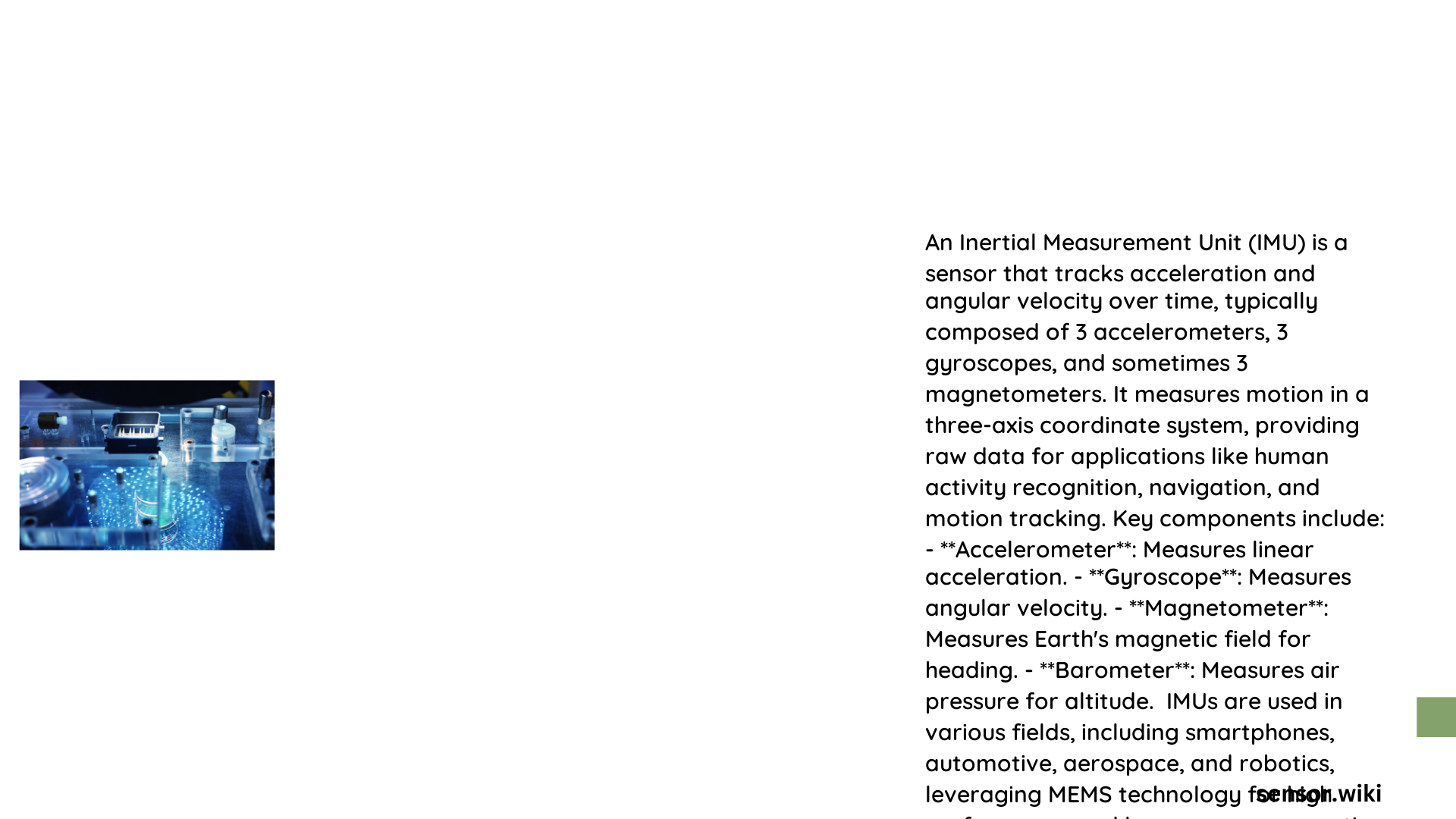Inertial Measurement Unit (IMU) based sensors represent a sophisticated technological solution for measuring and tracking motion, orientation, and acceleration across multiple domains. These advanced sensor systems integrate accelerometers, gyroscopes, and sometimes magnetometers to provide precise spatial and kinematic data, enabling critical applications in robotics, aerospace, automotive, and consumer electronics. By combining multiple sensing elements, IMU based sensors can accurately capture complex motion dynamics with remarkable precision and reliability.
What Are IMU Based Sensors?
IMU based sensors are sophisticated electronic devices designed to measure and report specific force, angular rate, and orientation using a combination of accelerometers and gyroscopes. These sensors provide critical motion tracking capabilities across various technological applications.
Key Components of IMU Sensors
| Component | Function | Measurement Capability |
|---|---|---|
| Accelerometer | Measures linear acceleration | m/s² |
| Gyroscope | Tracks angular velocity | degrees/second |
| Magnetometer | Determines orientation relative to Earth’s magnetic field | microtesla |
How Do IMU Sensors Work?

Motion Detection Principles
IMU based sensors operate through complex mathematical algorithms that integrate multiple sensor readings:
- Acceleration Measurement
- Detects linear movement across three axes
- Provides instantaneous velocity changes
-
Compensates for gravitational forces
-
Rotational Tracking
- Measures angular velocity
- Calculates orientation changes
- Provides precise directional information
What Are the Primary Applications?
IMU based sensors find extensive applications across diverse technological domains:
- Robotics: Navigation and movement control
- Aerospace: Flight stabilization and guidance systems
- Automotive: Vehicle dynamics and safety systems
- Consumer Electronics: Motion tracking in smartphones and wearables
- Medical Devices: Rehabilitation and motion analysis equipment
What Challenges Exist in IMU Sensor Technology?
Accuracy Limitations
IMU based sensors face several technical challenges:
- Drift Errors: Cumulative measurement inaccuracies over time
- Temperature Sensitivity: Performance variations under different thermal conditions
- Vibration Interference: Potential signal distortion during high-frequency movements
How Are IMU Sensors Calibrated?
Calibration Techniques
- Static Calibration
- Measures sensor bias at rest
-
Establishes baseline performance parameters
-
Dynamic Calibration
- Evaluates sensor performance during actual motion
- Identifies real-world measurement characteristics
What Performance Metrics Matter?
Critical Performance Parameters
- Bias Stability: Consistency of sensor output
- Scale Factor Accuracy: Precision of measurement conversion
- Noise Equivalent: Minimum detectable signal variation
Future of IMU Based Sensor Technology
Emerging Trends
- Miniaturization: Smaller, more compact sensor designs
- Enhanced Signal Processing: Advanced algorithms improving accuracy
- Multi-Sensor Fusion: Integrated sensing technologies
Conclusion
IMU based sensors continue to revolutionize motion tracking across multiple technological domains, offering unprecedented precision and reliability in measuring complex spatial dynamics.
Technical Specifications Summary
- Typical Accuracy: 0.1-1 degree per hour
- Sampling Rates: 100-1000 Hz
- Size Range: 5-50 mm
- Power Consumption: 10-100 mW
References:
1. IEEE Sensors Journal
2. MEMS and Nanotechnology Exchange
3. National Instruments Technical Resources
